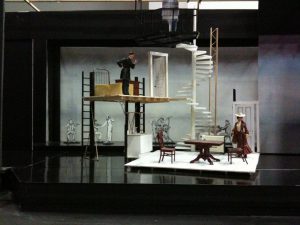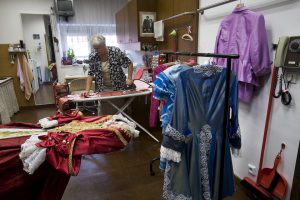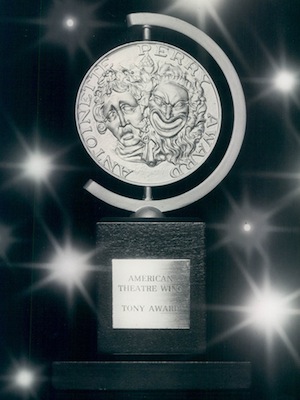
As with many industries, the easiest “in” is education. Whether you’re just embarking on a design career and are considering a major, either a BA in general theatre with a design emphasis, or a more focused BFA in design and technical theatre, this is a traditional first step. If you’re afraid it’s too late in life to start over with a bachelor’s degree, have no fear, it’s never too late to design a play! I’ve know many designers who chose graduate school after a few years designing low budget theatre. Their majors have ranged from fine art to fashion design. Graduate school is perfect for the serious late-start designers and those out of BA or BFA programs.
If it’s too soon for school, volunteering is the easiest way into the industry. Theatre thrives off of eager volunteers. Once you earn your stripes, companies are also more willing and likely to hire you and connect you with other artists. There are two levels to begin volunteering—community theatre and regional theatre. Both are an excellent start. In a community theatre where musicals featuring large family-friendly ensembles like The Music Man or smaller single-set plays like Steel Magnolias are the norm, you’ll likely have more hands-on experience with design, while a regional theatre usually looks for administrative help. Both situations provide excellent networking opportunities.
There are low-budget, no-budget, and rough-and-tough community theatres everywhere. These are theatres that operate on sheer will and love of the art, and they are always looking for volunteer help. Maybe you have to begin as an usher if you have no technical experience, but just getting your foot literally in the door can open up networking opportunities with designers, and most likely at this industry entry level, people will accept any willing extra hands.
Regional theatres rarely ask for volunteers in their production departments. Often, their craftsmen are union and highly skilled, but if you happen to be a carpenter aspiring to become a scenic designer, it never hurts to get to know your local regional theatre’s technical director. Start by contacting the institution’s volunteer coordinator, or reach out to departments directly, you never know what a theatre needs!
For those in-between volunteer and school phases, internships are an excellent way to transition from enthusiast to professional. Many regional theatres have internship or fellowship programs designed to jump-start careers in technical theatre. If this isn’t an option in your area, try the local community college for design classes. Generally, students are given the opportunity to design or assist designers on shows, while networking with professionals. Brushing up on sewing and drawing skills, or learning CAD drafting and video editing are great ways to develop employable skills.
Once you’ve honed your skills with classes and volunteer experience, then you’ve also met some designers that are always looking for assistants. Assisting is one of the hardest, but most rewarding steps toward a design career. If you have an excellent attention to detail and are great with a scale rule, you’re the model builder your local scenic designer has been waiting for. Do you know some simple hand sewing and are great at organizing receipts? You’re a costume designer’s dream assistant. If you’re patient, eager, and willing, nearly any designer would love your help, and assisting is one of the greatest resume credits. Eventually, designers have too much work for any given show, and often recommend the theatre hire their favorite assistant instead. Just like that, you go from assistant to designer.
There is no simple path to a career in design. Some people find their way into the industry fresh out of college; others discover theatre later in life. Many receive traditional education; others learn on the job. This diversity in knowledge and experience is the life force that keeps theatre innovative and evolutionary. We welcome new generations of thespians with open arms, so what are you waiting for?















